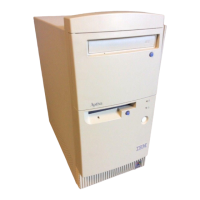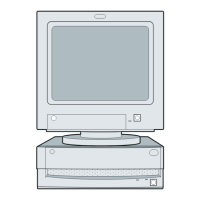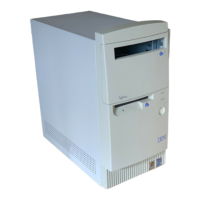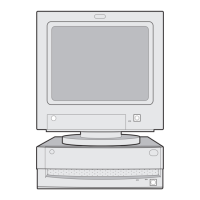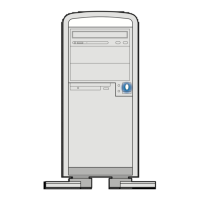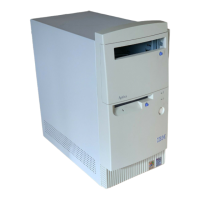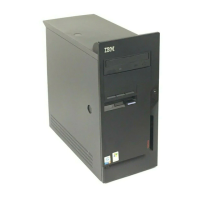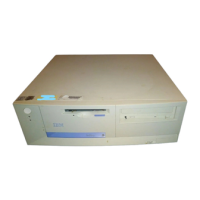Installing additional drives 95
Installing additional drives
When you install additional drives, you have to use
signal (also called data) cables that are attached to the
correct connectors on the system board. The system
board has three connectors for drive signal cables:
• Local Bus connector 1 (labeled J12 on your system
board)
• Local Bus connector 2 (labeled J13 on your system
board)
• Diskette connector (labeled J10 on your system
board)
See pages 127 and 128 to identify the connectors.
note:
To install additional drives, you may have to purchase
power and signal cables.
The following table shows the types of drives that can
be attached to each connector on the system board.
IDE/AT interface drives
Two drives can be attached to each IDE/AT connector
with the proper cables. When two drives are attached to
one connector, one drive must be the master device, and
the other the slave device. Jumper settings on the drives
determine which drive is the master and which is the
slave. If you are installing an additional drive, see
page 97 for information on the connectors and settings
you should use.
The hard disk that came preinstalled in your computer is
attached to Local Bus connector 1 and is set as a master
device.
Connector
Interface
type
Description
Local Bus
connector 1 (J12)
IDE/AT
Local Bus
Preferred location for first
and second hard disk
drives. A CD-ROM drive
can also be attached here.
Local Bus
connector 2 (J13)
IDE/AT
Local Bus
Preferred location for a
third or fourth hard disk
drive. A CD-ROM drive
should be attached here.
Diskette connector
(J10)
Standard
diskette AT
Should be used for
diskette drives or diskette
AT interface tape drives.
bi2gntce.bk : bi2gusys.doc Page 95 Saturday, June 3, 1995 6:54 AM
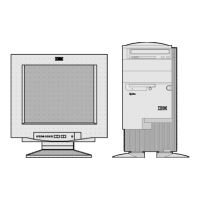
